Connecting the Dots: From Remote Operations to Full Autonomy

Realizing the full value of digital solutions far exceeds the capability of technology. The technology exists today to help offshore energy and maritime operators radically improve efficiency and cut costs in equal measure. The real trick to driving efficiencies is to take advantage of the latest technologies while at the same time negotiating the necessary culture change within individual organizations, to really reap the benefits.Harvest Technology Group is a relatively young and small Australian company that has caught the attention of a number of offshore and subsea industry heavyweights…
Corvus to Equip First Hydrogen/electric Hybrid Fishing and Training Vessel

Corvus Energy, a company providing zero-emission solutions for the maritime industry, said Monday it had won a contract with Hvide Sande Shipyard in Denmark to supply a complete hydrogen fuel cell system for the training vessel “MS Skulebas.” "This marks a historic milestone for Corvus Energy," Corvus Energy said."The 35-meter fishing and training vessel has the latest technology and commercial fishing systems installed and sets an example of innovation and cooperation within the maritime and education sectors.
Furetank and Wärtsilä Advance Engine Technology to Reduce Methane Slip
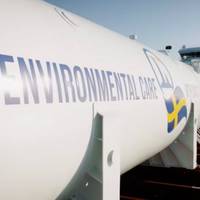
Wärtsilä and Swedish shipping company Furetank are co-developing and testing two technologies showing the potential to halve the methane slip.Running vessels on LNG or bio-LNG reduces emissions of CO2, NOx, SOx and harmful particles, but the downside is methane slip: the release of unburned gas fuel, not fully combusted in the engines.Although the fraction released is small, methane is a more potent greenhouse gas than CO2.Two technical solutions have been tested in Furetank’s Vinga series tankers.
Region in Focus: Norway’s West Coast Shipping Tech Hub
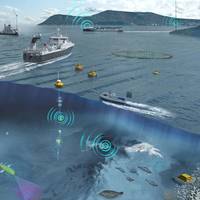
Two load-bearing pillars of Norway’s leading maritime industry cluster in Sunmøre on the country’s west coast – offshore energy and the expedition cruise sector – took severe knocks from plunging energy prices in the 2010s followed by COVID-19. However, a recent tour of the region found the cluster in recovery mode.At the time, the cluster’s diversification strategy was to dive into the emerging expedition cruise sector: small, highly sophisticated ships designed to operate in some of the world’s most sensitive environments incorporated features including the highest ice-class…
Shipbuilder Austal USA Partners with USV Firm Saildrone
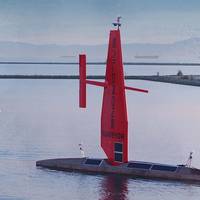
Shipbuilder Austal USA and has formed a strategic partnership with Saildrone, Inc to build cutting-edge, autonomous uncrewed surface vehicles.The partnership ensures that production of the autonomous and uncrewed Saildrone Surveyor will accelerate to meet the growing demand of the U.S. Navy and other government customers for the cutting-edge solution for maritime domain awareness, hydrographic survey, and other missions requiring persistent wide area coverage. Autonomous vessel capability has been identified as an area of strategic importance by the U.S. Navy.
Fuel Cells for Maritime Shipping
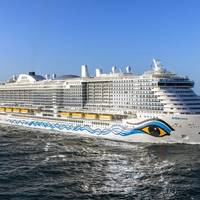
Freudenberg Sealing Technologies will act as a technology partner in the Pa-X-ell2 project. The goal is to develop a new generation of fuel cells for use on seagoing vessels. For the future project on sustainable, CO2-free mobility at sea, the largest shipyard for the construction of cruise ships – Meyer Werft in Papenburg – and the global technology specialist Freudenberg Sealing Technologies intend to equip future generations of cruise ships with fuel cell propulsion. Besides Meyer Werft…
Preparing for IMO 2020: Marine Emission Solutions
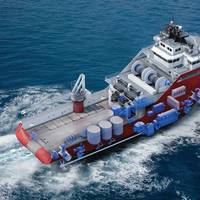
Part I: Enhancing Engines & Fuels"Wood Mackenzie forecasts a 25 percent increase in price for lower sulfur content fuel based on a SOx scrubber adoption rate of about two percent, but some scenarios could cause LSFO prices to spike by as much as 60 percent."Around 80 percent of global trade is carried by sea. With more than 125,000 commercial and naval vessels operating around the world, ship-engine emissions are projected to rise by 250 percent by 2050 unless controls are imposed.
Book Review: Getting Down to It; 50 Years of Subsea Success in Norway
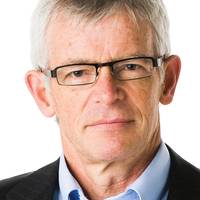
The Norwegian Continental Shelf’s journey from the very first basic marinized subsea trees to today’s complex and sophisticated subsea processing equipment has been a rapid, at times turbulent, but always remarkable.There are many engineers who have seen through that journey, from the first exploration wells using Norwegian rigs in the mid-1970s to today. One has now written the history of subsea technology in Norway and this year’s Underwater Technology Conference (UTC) has been chosen for its launch…
First LP-SCR System Successfully Completed in M/V Southern Pearl
The first commercial Low Pressure SCR system (LP-SCR)system from Japan Engine Corporation (J-ENG) has entered service onboard a major Singaporean container lines, PDL International’s 600TEU container vessel, M/V Southern Pearl.The system has supplied to a 6UEC33LSE-C2 engine, manufactured by J-ENG’s Chinese licensee, China Shipbuilding Industry Corporation Diesel Engine Co., Ltd. (CSE) and the vessel was built by Taizhou Kouan Shipbuilding Co., Ltd.Since J-ENG’s SCR system is compactly designed, the flexible arrangement can be realized and this time it was actually confirmed with the full scale vessel that the system is relatively easy to be installed in a small-size vessel with limited space for installation.Further…
Bio-Sea BWTS Installed in CMA CGM Antoine De Saint Exupéry.
France's BIO-UV Group has successfully installed and commissioned its Bio-Sea ballast water treatment system (BWTS) in CMA CGM's new flagship, the 400 m long, 20,600 TEU CMA CGM Antoine De Saint Exupéry.The vessel, one of the largest containerships to be built by Hanjin Heavy Industries' yard in the Philippines, and the largest to fly the French flag, was christened in Le Havre earlier this month by the Minister of Economy and Finance, Bruno Le Maire, and the Minister in charge of Transport, Elisabeth Borne.BIO-UV Group will also supply BIO-Sea Units to nine 22,000TEU CMA CGM vessels under construction in China, following the signing of a supply order earlier this year.Benoit Gillmann…
MAN Expands Low-Speed Portfolio
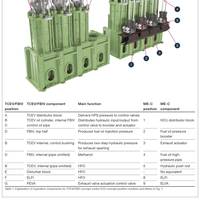
MAN Diesel & Turbo has added three new engines to its large-bore engine program. The engines are weight-optimized, compared to their MK 9 counterparts, and form the new design platform for a new Mk 10 engine portfolio. Key to the new platform is the development of the TCEV (Top Controlled Exhaust Valve) and FBIV (Fuel Booster Injection Valve) components. an MAN B&W S70ME-C10 type (delivering 3,430 kW per cylinder). These are the first of a new generation that ultimately will involve the upgrading of all S- and G-engines to the Mk 10 platform.
Terragon: Next-Step in Ship Waste Handling
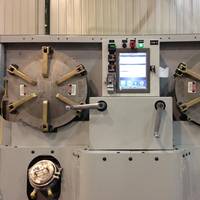
Terragon Environmental Technologies Inc., a developer of waste-to-resource technology solutions, has entered into a strategic partnership with Green Marine Capital (GMC). Terragon CEO and Co-founder Dr. Panayotis Tsantrizos said the partnership will allow the company to commercialize its products in the marine sector. Terragon’s first commercially available product, the Micro Auto Gasification System (MAGS), is designed to convert each kilogram of organic waste generated by a habitat into 2kWh of thermal energy by using gasification technology the company says is clean and simple to operate.
Navis N4, Kalmar SmartPort Chosen for Paraguayan Ports
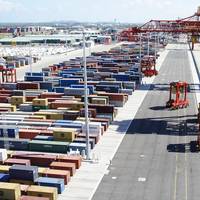
Kalmar and Navis, both part of Cargotec, revealed at 'Intermodal South America' that Puerto Caacupe-mi in Paraguay has chosen Navis’ N4 terminal operating system (TOS) and Kalmar’s SmartPort process automation solutions for its Asuncion and Pilar facilities. Cargotec explain that Puerto Caacupe-mi selected N4 due to the TOS’ flexibility to adapt to individual customer needs, and at the same time, achieve greater agility, efficiency and control in handling large cargo volumes.
Johnson Matthey’s New Engines for Tier 4 Compliance
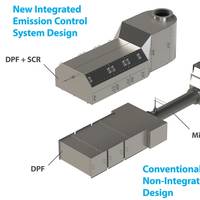
To meet the emission limits for of the EPA’s New Source Performance Standards, new engines will come from the factory with low NOx, PM, CO and HC emissions. For existing engines, Johnson Matthey introduces a Tier 4 solution with its compact and efficient integrated SCRT (Selective Continuously Regenerating Technology) system combining its CRT diesel particulate filter (DPF) and SCR technology making it the best available retrofit technology on the market today. Recognizing the need for a compact retrofit design capable of fitting into small spaces…
Making Flare Gas Useful
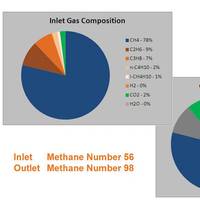
Wärtsilä has developed the GasReformer, a product which converts associated gas, which is often flared, into usable fuel for its dual-fuel engines. When producing oil, associated gas is also released from the deposits. In many places this gas is commonly burnt off in gas flares, a waste of energy and a pollutant of the atmosphere. In addition to useful methane, this gas consists of heavier hydrocarbons including ethane, propane and butane. The composition of the gas typically also vary during the production phase of the oil field.
Penn State Receives Grant
The Pennsylvania State University Electro-Optics Center, Freeport, Pa., is being awarded an $11,488,791 cost-plus-fixed fee contract for research, design, development, and delivery of sub-systems for use in the next generation radars and the Common Data Sensor Architecture (CDSA) Program. The CDSA is a centralized system for collecting input information from a variety of sensors and even providing information from one group of sensors to another. Two technologies are fundamental for the CDSA to successfully transition to producible, fielded systems: high voltage/ high power switching devices based on halide chemical vapor deposition; and wavelength division multiplexing.
AVEVA to Acquire Tribon Solutions AB
AVEVA Group, has announced the proposed acquisition of Tribon Solutions AB. Since 1967, AVEVA, formerly known as Cadcentre, has been providing IT solutions and services to the process, power and offshore industries. A recent survey of all CAD designed facilities in the North Sea shows a large proportion of all Crude Oil production in that region is processed by facilities designed with AVEVA Solutions. Similar figures relate to the global power, petrochemical and pulp and paper industries. Marine design, specifically that of hulls and other floating structures, poses specific challenges and practices not seen in plant design or ship outfitting -- sectors in which AVEVA already has established strength.
Metro Machine Agrees to Purchase UltraStrip
UltraStrip Systems, Inc. announced that Metro Machine Corp. of Norfolk, Va. has agreed to purchase a high production prototype UltraStrip robotic paint removal system for $2 million. Metro is developing a marine vessel enclosure, paint removal, and coating system, the Metro Ship Coating System, and will be evaluating the UltraStrip prototype for use in the Metro Ship Coating System. Dr. Robert O. Baratta, president and CEO of UltraStrip Systems said, "Metro plans to use the UltraStrip technology in its own shipyard and market the Metro Ship Coating System with the UltraStrip technology to other shipyards and ship repair companies.
Optimal Electric Ship Propulsion Solution
Throughout the history of shipbuilding, the key challenge too often has been how to build the right ship around a given propulsion system, rather than creating tailored propulsion system for the ship. That was true when the best propulsion "engines" available were sails, and it is also true for today's diesel, gas turbine and electric hybrid systems as well. The ideal, of course, is to allocate cargo space, cabin space, the shape of propulsion units, and even the shape of the ship's itineraries around the needs of the marketplace rather than around the limitations imposed by the ship's propulsion system. Factors that remain in the path of that ideal include the underlying efficiency across a broad operational range with which chemical energy is turned into mechanical energy…
An Innovative LNG Carrier Concept
Concurrent with marine industry consolidation on the ship owning, building and supply fronts, increasingly innovative vessels concepts are originating from in-house design teams sitting with the major equipment manufacturers. Single-source supplier is today’s mantra on the commercial and military fronts, with companies such as Wärtsilä leading the way. The company recently published details of an innovative new LNG carrier concept, the Wärtsilä DF-electric propulsion concept for liquefied natural gas (LNG) carriers, bringing together two technologies: electric propulsion and dual-fuel engines. The Wärtsilä DF-electric LNG carrier concept is designed for a single-screw vessel with four cargo tanks and a capacity of about 138,000 cu.
Product: Night Vision Technology Keeps Rigs and Boats Safe
Night Vision Technologies, Inc. (NVT) offers a comprehensive approach to night/day navigational and security video needs, addressing the offshore commercial industry. By designing systems that incorporate many complimentary technologies, NVT is able to meet the growing security and safety concerns for vessels, platforms, ports, and harbors worldwide. NVT offers hybrid infrared imaging, and thermal heat gathering technologies for detection of objects on water, platforms, or land. In addition, they add Gen III military light intensification (night vision), sensitive low light (low lux) CCTV, and high resolution color CCTV for critical identification. This merger of technologies allows for detection of objects by their infrared heat signatures, day or night.







